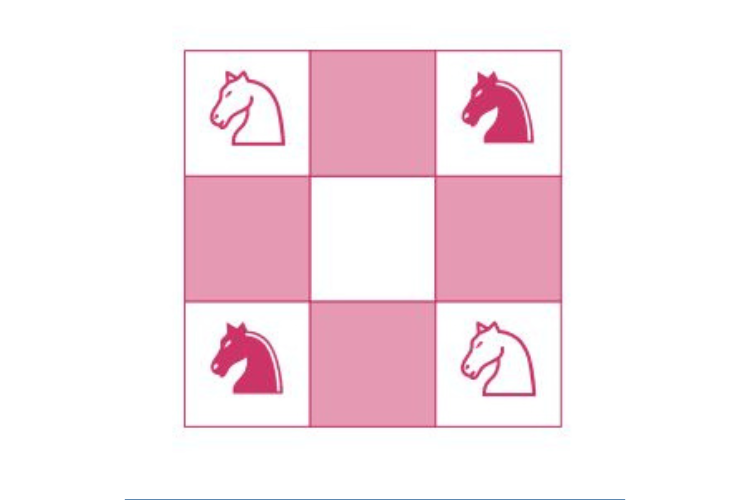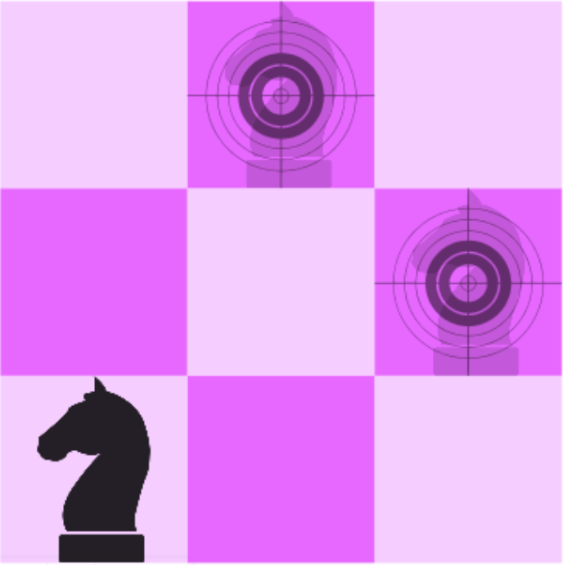
Historical Context
In 1512, the Italian mathematician Guarini de Forli (1464-1520) presented a challenge known as the “Four Knights.” The objective was to move the white knights to the lower corners of the board and the black knights to the upper corners. The problem was to determine if it was possible and, if so, what the minimum number of moves required to achieve this configuration would be. Despite seeming simple on a small board, the task quickly became complex.
In mathematics, it is common strategy to transform a problem into another equivalent one, but with a simpler scenario. In this challenge, we will show that this problem is more easily solved by using the approach of Graph Theory. There are cases, despite the complicated movement of the knight on the board, where challenges become akin to a simple rotation movement.
Formal studies in graphs date back to the 18th century and are greatly influenced by the Swiss mathematician Leonhard Euler (1707-1783), who proposed a solution to the Seven Bridges of Königsberg problem. This problem required finding a path that crossed each of the seven bridges in the city of Königsberg exactly once and ended at the same starting point. Euler approached the problem using graphical representation, and his work laid the foundations for the formal study of graph theory.
Description
A 3 by 3 board is given with four knights positioned at the corners of the board, as shown in the figure below:

The objective of the challenge is to move the knights according to the rules of knight movement in chess, i.e., in an L-shape, so that the black and white knights exchange their initial positions for one of the four new suggested positions below:

Knights move in an “L” shape, just like in the game of chess: either two squares horizontally and one vertically, or two squares vertically and one horizontally. It’s important to remember that two knights are not allowed to occupy the same square at any point during the game.

Try to solve this challenge:
Learn more:
You can find other challenges at: OBMEP portal.
 Na imagem visualizamos o logotipo do projeto 'MatematiZou', escrito com letras de forma na cor verde-azulada. A letra “Z” está na cor branca dentro de um hexágono com pontas arredondadas preenchido na mesma tonalidade de cor do restante das letras.  Na imagem temos um mini caminhão branco de madeira, cuja caçamba é azul escura e está escrito em letras brancas “UFABC”. As rodas do caminhão são vermelhas e quadradas. Cada par de rodas do caminhão está em cima de uma pista com ondulações.  Na imagem, há várias pessoas participando do evento “UFABC para todos” no Ginásio da UFABC campus Santo André. Algumas pessoas estão ao redor de uma mesa com jogos que incluem copos, mapas, tabuleiro de xadrez, entre outros, e outras, estão vendo as exposições espalhadas por todo o ambiente.](https://matematizou.gradmat.ufabc.edu.br/files/LogoMatematizouTeal.png)

